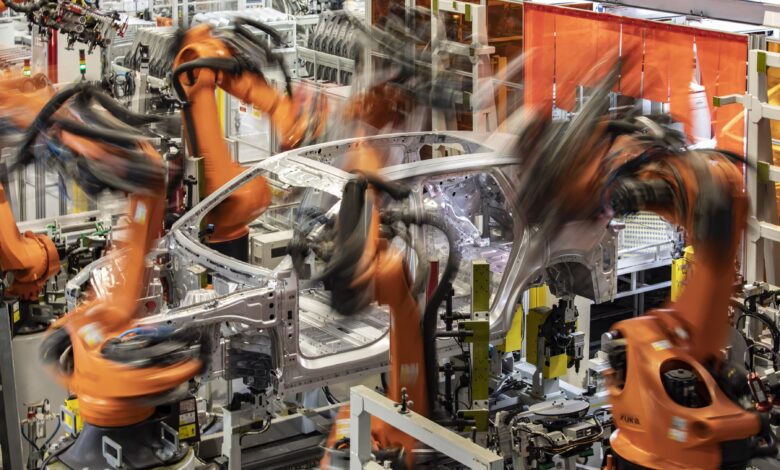China factory activity shrinks in surprise hit to growth outlook

CHINA’S factory activity unexpectedly contracted in May, a warning sign from the area of the economy that Beijing is most reliant on to drive growth.
The official manufacturing purchasing manager index fell to 49.5 in May, the National Bureau of Statistics (NBS) said on Friday (May 31). That compares with a reading of 50.4 in April and a forecast of 50.5 in Bloomberg’s economist survey. Any number above 50 points to an expansion.
The reversal in manufacturing, after two months of gains, flags a threat to China’s economic growth target of around 5 per cent this year. The country’s export-oriented industries are expected to play the crucial role in hitting that target, with consumption at home still weighed down by a real estate slump.
There’s an additional risk in the pipeline for Chinese manufacturers as tensions with trade partners escalate. The US and European Union – two of China’s biggest export markets – accuse Beijing of building excess capacity in its industries through state subsidies. They are erecting new trade barriers that will hold back sales of key products such as electric vehicles (EVs), and threatening even more.
“The manufacturing-driven recovery remains vulnerable,” said Raymond Yeung, chief economist for Greater China at Australia & New Zealand Banking Group. “In the next few months, rising trade protectionism will be a major headwind.”
The Biden administration recently imposed a 100 per cent tariff on Chinese electric cars, as well as other charges on a variety of imports including metals. The EU is expected to announce EV tariffs in the coming weeks and is investigating Chinese subsidies in other areas.
GET BT IN YOUR INBOX DAILY

Start and end each day with the latest news stories and analyses delivered straight to your inbox.
China’s exports posted solid growth in the first four months of the year. But the PMI sub-index for new export orders contracted in May for the first time in three months. A measure of input prices climbed to the highest in eight months, reflecting a pickup in commodity costs.
In a statement accompanying the data release, NBS analyst Zhao Qinghe pointed to “a high base of comparison led by previous fast expansion in the industry” and “insufficient effective demand” as reasons for the slowdown.
The non-manufacturing measure of activity in construction and services came in at 51.1, the statistics office said. That compares with a forecast of 51.5 and an April reading of 51.2. BLOOMBERG





